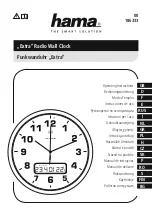
10
English
IN
T
R
O
D
UCTIO
N
by making repeaters available to all users after
every transmission.
CONVENTIONAL RADIO SYSTEMS
Conventional radio systems typically refers to
unit-to-unit communications through a single
channel. Conventional systems also allow
radio users to extend communication coverage
by relaying their messages through a repeater.
To ensure coordinated use by multiple
talkgroups, each radio user must monitor the
channel or repeater before transmitting to
verify that the system is not currently busy.
CDM1550•LS+ RADIO FEATURES
Radio Feature Highlights:
Radio Wide Features
•
14-Character Alphanumeric Display
•
4 Programmable Feature Buttons
•
Up to 15 PassPort and/or LTR Zones with
up to 16 Talkgroups per Zone
•
Up to 16 or 160 Conventional Channels
(depending on model capability)
•
X-Pand
TM
Audio Enhancement
•
Home Channel Revert
•
Telephone Interconnect
•
User-programmable Phone and Scan Lists
•
Voice Storage Capability
PassPort Zone Features
•
Unique Mobile Identification Number (MIN)
per Radio
•
Unique Electronic Serial Number (ESN)
per Radio
•
Registration/Deregistration upon power
up/power down
•
Automatic Seamless Roaming between
Networked Sites
•
Site/Talkgroup Restriction
•
Optional Primary Talkgroup
•
Primary Talkgroup Transmit Inhibit
•
Registered Site and Mobile Identity View
•
User Initiated Roam Request
Note:
Throughout this manual there are
features listed as trunked and
conventional. Trunked indicates the
feature functions in both PassPort
and LTR zones unless otherwise
noted. Conventional indicates the
feature functions in Conventional
zones only.
Summary of Contents for Professional CDM1550 LS+
Page 6: ...6 CONTENTS Notes ...
Page 8: ...8 SAFETY Notes ...
Page 26: ...26 RADIO OVERVIEW Notes ...
Page 68: ...68 RADIO CALLS Note ...
Page 78: ...78 SCAN Notes ...
Page 86: ...86 PHONE Notes ...
Page 96: ...96 VOICE STORAGE Notes ...
Page 104: ...104 UTILITIES Notes ...
Page 114: ...114 ACCESSORIES Notes ...











































